| View previous topic :: View next topic |
| Author |
Message |
Josele

Joined: 10 Apr 2012
Posts: 407
Location: Tarifa, Spain



|
 Posted: Apr 10, 2012 20:01 Post subject: Biotite: Ferrimuscovite or Siderophyllite? Posted: Apr 10, 2012 20:01 Post subject: Biotite: Ferrimuscovite or Siderophyllite? |
|
|
Some days ago I uploaded two photos of biotite mica to my Mindat gallery. As biotite was discredited by the IMA, I had to choose between ferrimuscovite or "biotite - phlogopite series". As my specimens have both black mica and muscovite in the same crystal, I though my black mica should be ferrimuscovite (a variety of muscovite) and not a specie belonging to "biotite - phlogopite series", where most likely specie to my black mica is siderophyllite, a rare specie never reported at this locality and with so different color, luster, habit, etc. Then I labeled my black micas as ferrimuscovite.
It turns out that just yesterday I joined as site admin. of the Spanish version of FMF and coincidentally one of the first tasks to be done was to validate, among others, my own minerals! Well, my stones have not passed the test. One thing is to upload some pictures for private purposes, and other more serious is to validate a species to a location in a reference forum gallery. According to other Spanish FMF administrators, we decided to consult here and ask your opinion
Provisionally, waiting for your help to clarify this issue, I changed my specimens to biotite (curiously Mindat still has a gallery for biotite, even if is not a specie).
We found this in the IMA but only managed to increase my confusion:
"The CNMMN Subcommittee on Nomenclature of the Micas (1998, 1999) has recommended that the name biotite be used for a series including Phlogopite, Siderophyllite, Annite and Eastonite, and is therefore no longer to be regarded as a species name. Fluorophlogopite and Fluorotetraferriphlogopite should be included. It is most commonly used for the micas on the Fe-rich end of the series, including Annite, Fluorannite, Tetra-ferri-annite and Siderophyllite".
Can you help me? Can you identify which specie is black mica in this specimens?
I would appreciate all comments, thank you very much.
| Description: |
Biotite, Muscovite
Cap de Creus, Cadaqués, Alt Empordà, Girona, Catalonia, Spain
3,5 x 2,7 x 0,8 cm.
Biotite band in muscovite. Collected close to the lighthouse in 1977. |
|
| Viewed: |
24548 Time(s) |
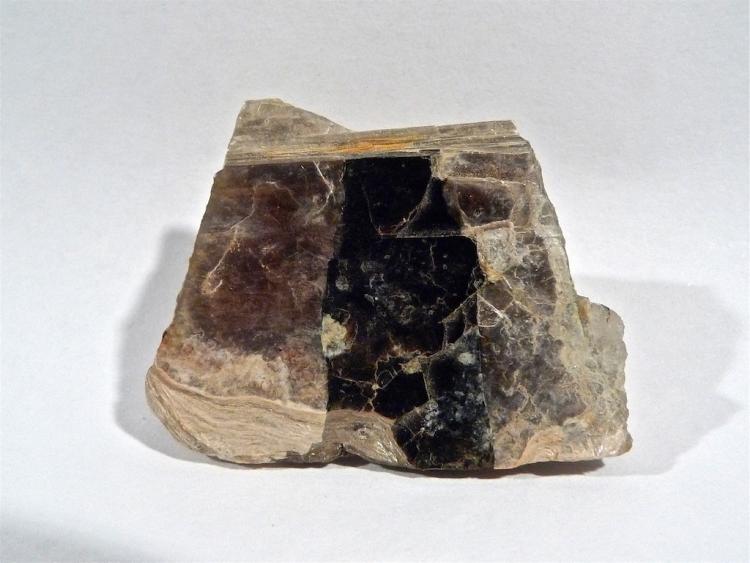
|
| Description: |
Biotite, Muscovite
Cap de Creus, Cadaqués, Girona, Catalunya, España
5,5 x 3,5 x 1 cm.
Biotite - muscovite pseudo hexagonal crystal. Collected near the lighthouse in 1975. |
|
| Viewed: |
24564 Time(s) |
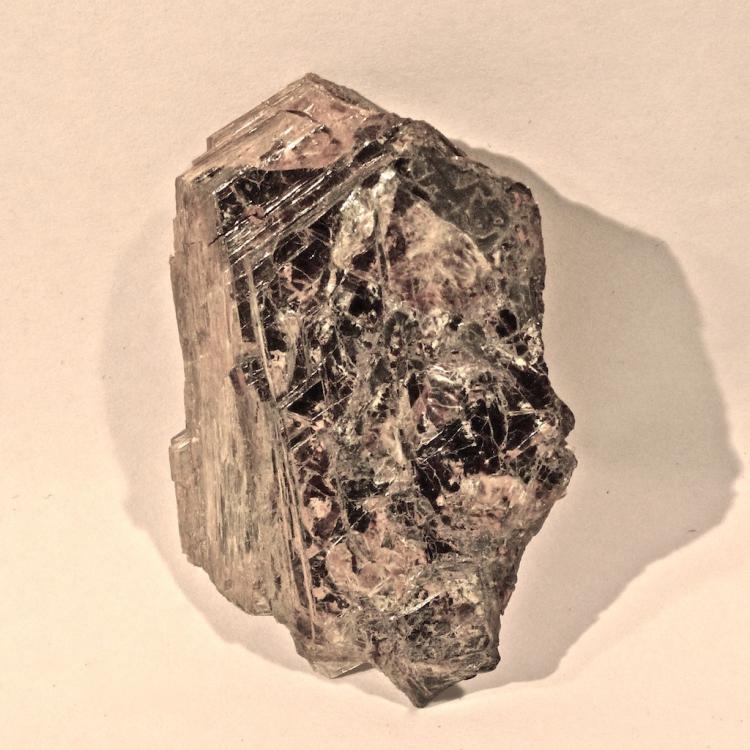
|
_________________
Josele |
|
| Back to top |
|
 |
alfredo
Site Admin

Joined: 30 Jan 2008
Posts: 979



|
 Posted: Apr 10, 2012 20:22 Post subject: Re: Biotite: Ferrimuscovite or Siderophyllite? Posted: Apr 10, 2012 20:22 Post subject: Re: Biotite: Ferrimuscovite or Siderophyllite? |
|
|
Jose, There is nothing wrong with uploading your picture under the name "Biotite", even if that is no longer considered to be a "species". In reality, the vast majority of complex silicates in mineral collections will never be analyzed and therefore, unless the chemistry of a specific locality has been studied by professionals, labelling our specimens with field terms or group names like biotite, tourmaline, amphibole, etc, is the best that can be done.
Incidentally, I would call Biotite "reclassified", rather than "discredited". It is now considered an intermediate variety of complex solid solution series with at least 5 end-members, rather than an independent end-member species in its own right. And geologists and petrologists still use it as a field term for any dark mica without lithium. So the name is not going to just "disappear".
|
|
| Back to top |
|
 |
Josele

Joined: 10 Apr 2012
Posts: 407
Location: Tarifa, Spain



|
 Posted: Apr 10, 2012 20:42 Post subject: Re: Biotite: Ferrimuscovite or Siderophyllite? Posted: Apr 10, 2012 20:42 Post subject: Re: Biotite: Ferrimuscovite or Siderophyllite? |
|
|
Very thanks for quick reply Alfredo. Completely agree with you, I'll keep calling black mica or biotite, but when I see the poor biotites, without classification or chemical formula, lost in undefined biotite Mindat gallery, seem to be in purgatory waiting for someone to help them get out of there...
_________________
Josele |
|
| Back to top |
|
 |
Riccardo Modanesi
Joined: 07 Nov 2011
Posts: 618
Location: Milano


|
 Posted: Apr 11, 2012 10:13 Post subject: Re: Biotite: Ferrimuscovite or Siderophyllite? Posted: Apr 11, 2012 10:13 Post subject: Re: Biotite: Ferrimuscovite or Siderophyllite? |
|
|
Hi to everybody!
OK this is a problem having been lasting for some decades. For example we don't find anymore names like "bauxite", "hypersthene", "bronzite" or even "oligoclase", "labradorite", "andesine", "bytownite", though they are very important minerals and some of them chatacterize the name of a rock itself!
What did I do then? For garnets, tourmalines etc. I tried to characterize the specimen for what I saw and when I was doubtful I called it simply "elbaite" if coloured, "schorlite" if black (for tourmalines of course!), or "almandine" if dark red, "pyrope" if red" "andradite" if black or brown or dark green" and "grossular" if differently coloured (for garnets obviously). For the rest I have always kept the old historical names like "bauxite", "hypersthene" and of course "biotite"! For other cases I put the name of the main mineral and near it the word "variety" and the other (obsolete?) name, for example "dolomite var. miemite", "pyrite var. bravoite", "bavenite var. strzegomite" etc.
Greetings from Italy by Riccardo.
_________________
Hi! I'm a collector of minerals since 1973 and a gemmologist. On Summer I always visit mines and quarries all over Europe looking for minerals! Ok, there is time to tell you much much more! Greetings from Italy by Riccardo. |
|
| Back to top |
|
 |
Pete Modreski
Site Admin

Joined: 30 Jul 2007
Posts: 709
Location: Denver, Colorado



|
 Posted: Apr 11, 2012 11:45 Post subject: Re: Biotite: Ferrimuscovite or Siderophyllite? Posted: Apr 11, 2012 11:45 Post subject: Re: Biotite: Ferrimuscovite or Siderophyllite? |
|
|
| I heartily agree with Alfredo's good advice and description; just call it biotite, and unless you are conducting a technical research study on the geochemistry and crystallography of these micas, that will suffice for all those who will view your images!
|
|
| Back to top |
|
 |
Josele

Joined: 10 Apr 2012
Posts: 407
Location: Tarifa, Spain



|
 Posted: Apr 11, 2012 18:23 Post subject: Re: Biotite: Ferrimuscovite or Siderophyllite? Posted: Apr 11, 2012 18:23 Post subject: Re: Biotite: Ferrimuscovite or Siderophyllite? |
|
|
Thanks Riccardo, thanks Pete, yes, to label as biotite is the cautious way to resolve this matter without analysis.
Some more pics from same location:
| Description: |
Biotite, Muscovite
Cap de Creus, Cadaqués, Girona, Catalunya, España
4,7 x 3,7 x 0,9 cm |
|
| Viewed: |
24394 Time(s) |
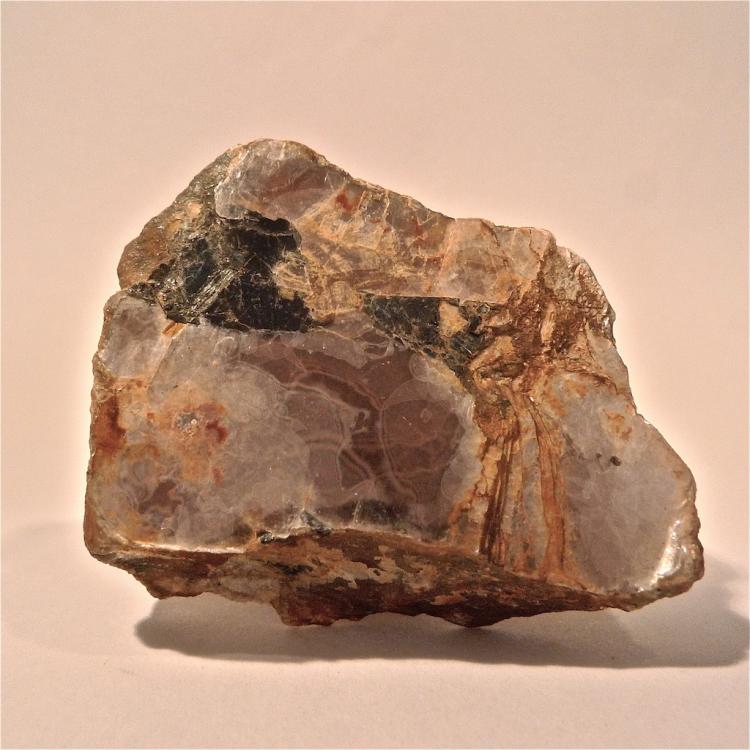
|
| Description: |
|
| Viewed: |
24340 Time(s) |
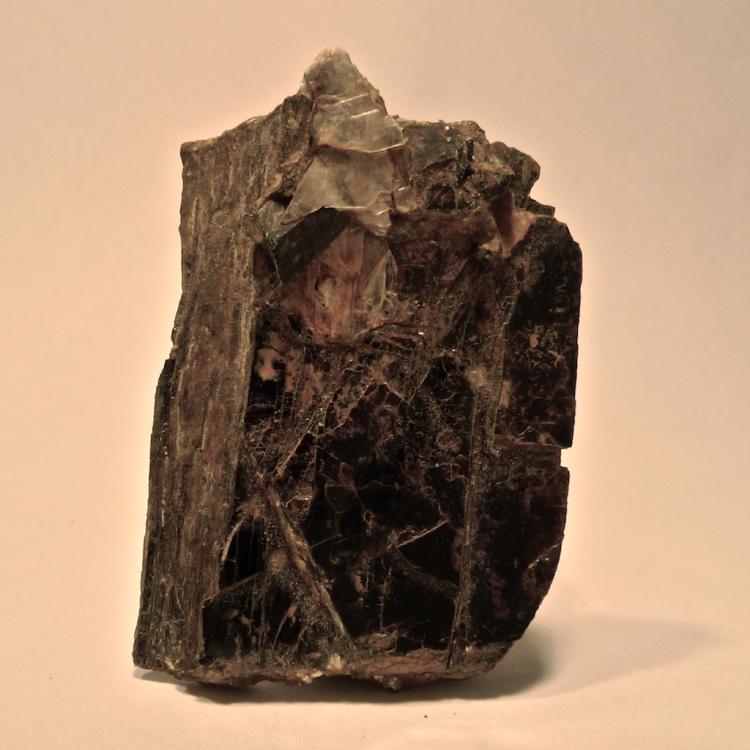
|
| Description: |
|
| Viewed: |
24365 Time(s) |
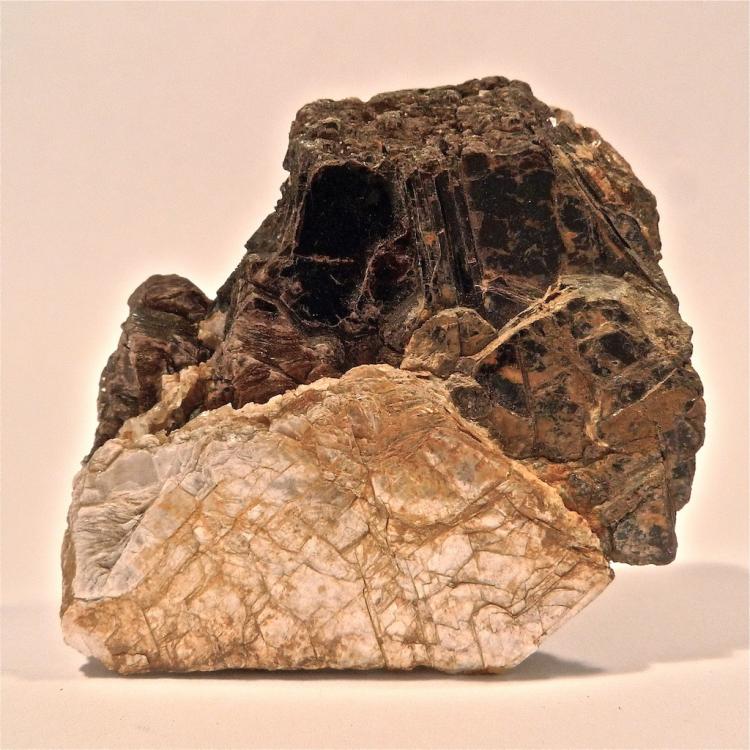
|
| Description: |
4,5 x 2,4 x 2,2 cm
Biotite on pegmatite matrix |
|
| Viewed: |
24371 Time(s) |
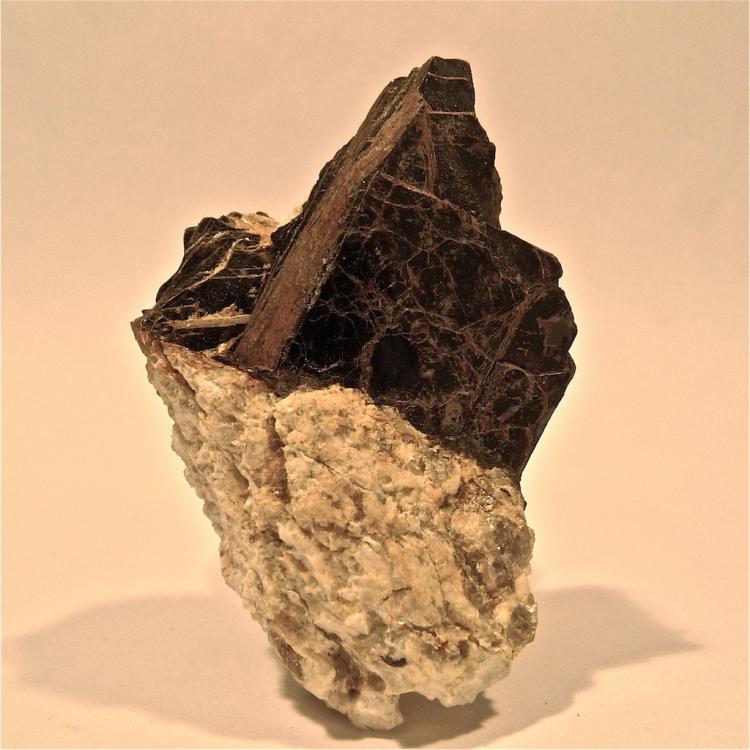
|
_________________
Josele |
|
| Back to top |
|
 |
Josele

Joined: 10 Apr 2012
Posts: 407
Location: Tarifa, Spain



|
 Posted: May 02, 2012 17:07 Post subject: Re: Biotite: Ferrimuscovite or Siderophyllite? Posted: May 02, 2012 17:07 Post subject: Re: Biotite: Ferrimuscovite or Siderophyllite? |
|
|
Finally, I sent a sample to Attard's for analysis. As micas are sometimes confusing, John made both XRD and EDX. XRD gives this formula:
K (Mg1.48 Fe1.28 Ti.24) (Al1.2 Si2.8 O10) (OH)1.4 F.32 O.28 corresponding to "Biotite 1M Ti-rich".
and EDX adds a small quantity of Cl in it. (please, see complete results below)
I would have liked identifying the specie of this mica but this formula do not points to a particular specie but a isomorphic mixture into "biotite - phlogopite series" with little titanium. Well, it will stay as biotite but at least it have a first name: TITANIAN BIOTITE.
Thanks for your attention and greetings.
| Description: |
|
| Viewed: |
24054 Time(s) |
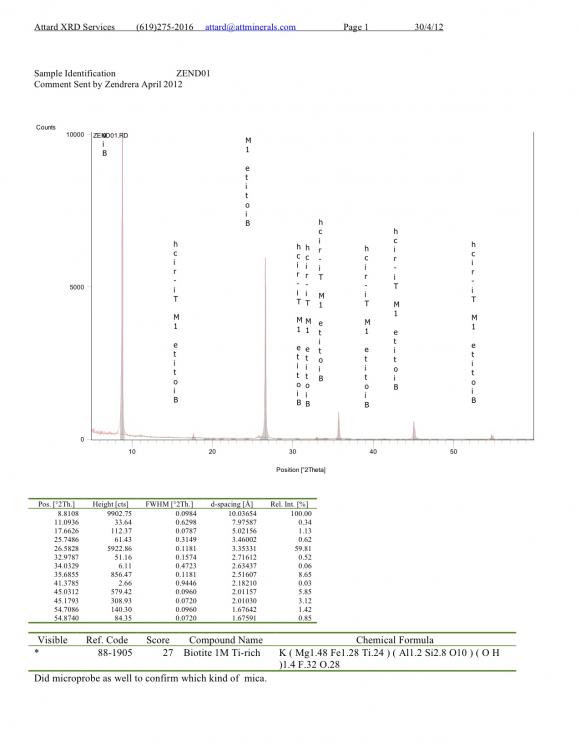
|
| Description: |
|
| Viewed: |
24070 Time(s) |
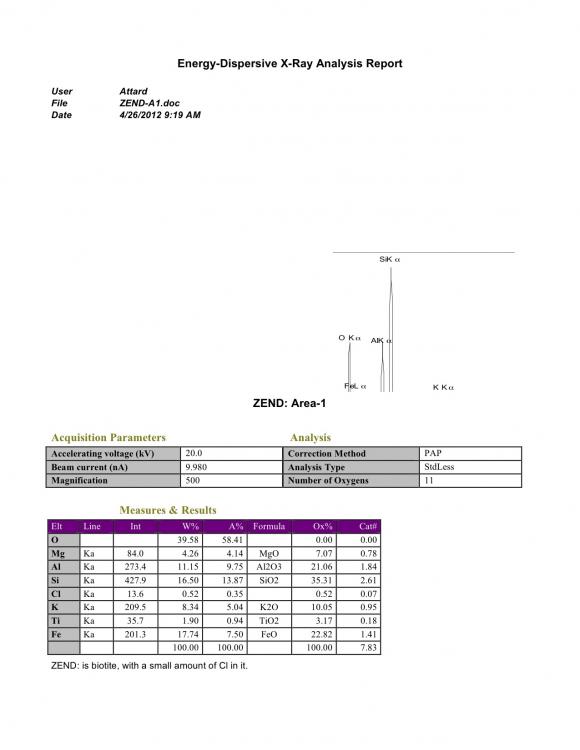
|
_________________
Josele |
|
| Back to top |
|
 |
GneissWare

Joined: 07 Mar 2008
Posts: 1287
Location: California



|
 Posted: May 02, 2012 17:17 Post subject: Re: Biotite: Ferrimuscovite or Siderophyllite? Posted: May 02, 2012 17:17 Post subject: Re: Biotite: Ferrimuscovite or Siderophyllite? |
|
|
The problem with analysis of silicates in particular is that the composition changes with PT conditions under which they crystallize. They can also undergo varying degrees of dissolution and recrystallization, making them difficult to analyze. If you had sent samples from various parts of the same crystal, you would likely have seen compositional differences.
All that said, Biotite is what I would have called it, even without an analysis.
|
|
| Back to top |
|
 |
Pete Modreski
Site Admin

Joined: 30 Jul 2007
Posts: 709
Location: Denver, Colorado



|
 Posted: May 02, 2012 18:55 Post subject: Re: Biotite: Ferrimuscovite or Siderophyllite? Posted: May 02, 2012 18:55 Post subject: Re: Biotite: Ferrimuscovite or Siderophyllite? |
|
|
These micas really are a messy mineral group to "pigeon-hole", but I understand that you WOULD like to be able to say with confidence, what species your specimen really is!
Just be glad it is not an amphibole specimen you have-- "hornblende"-- they are even worse! (much worse)
But let me offer some comments--I've done a fair amount of research work on micas in the past, so I think I can hope to add some clarity for you.
Look at the list of mica group minerals -- Trioctahedral subgroup--in the back of the Glossary of Mineral Species, 2008, if you have a copy; it's on p. 312. There are 21 such mica species listed (I'm sure a few more have been added since 2008.) Ignoring the ones that contain unusual elements, the simple ones are, highlighting the key chemical constituents, but keeping in mind of course that solid solutions exist between all of these, so that most samples are going to be intermediate compositions:
phlogopite, Mg + Al (very pale brown if low in Fe, darker depending on Fe content)
annite, Fe + Al (black)
tetraferriannite, all Fe, very little Al (also black)
fluorannite, = annite containing dominant F instead of OH (kind of rare, I believe)
siderophyllite, contains less Fe and extra Al; 2:3 Fe:Al ratio, vs. 3:1 in annite
So, as we know, in the good old simple days, (and as it says on p. 313 of that edition of the Glossary) micas between phlogopite and annite in composition, black in color and fairly high in iron, were simply called “biotite”, and that was it. But since that’s not a logical species name, one just has to decide which of the end-members above, your (or anyone’s) mica sample is closest to.
I should comment, that John Attard’s XRD pattern does not actually determine the COMPOSITION of the mica, that composition he shows for “Biotite 1M Ti-rich” is simply the composition of the one of the mica samples in the X-ray Powder Diffraction database, that had an XRD pattern closest to your sample; it doesn’t prove that yours has the exact same composition. As a matter of fact, that composition there quoted, because it contains Mg1.48 Fe1.28 , therefore contains MORE Mg than Fe, hence it is (by the current strict criterion of end-member composition) not “biotite” at all, but it would have to be reclassified as phlogopite! One could call it an iron- and titanium-bearing phlogopite.
So back to your sample, and a caveat as I’m sure John would agree, his EDX analysis is still somewhat approximate, and is not as accurate as a complete, wavelength-dispersive (WDS) microprobe analysis would be (more time-consuming, more expensive, and normally required a sample mounted in epoxy and polished). But putting that aside—just knowing that the data are subject to a +/- error of uncertain amount—the composition he gets—looking at the last column in the table, labeled Cat# (cation proportions), shows Mg 0.78, Fe 1.41, Al 1.84, Si 2.61 . Now one has to interpret whether this composition is closer to phlogopite, which would be Mg 3.0, Fe 0, Al 1.0, Si 3.0, annite (Mg 0, Fe 3.0, Al 1.0, Si 3.0), siderophyllite (Mg 0, Fe 2.0*, Al 3.0, Si 2.0) or tetraferriannite (Mg 0, Fe 4.0, Al 0, Si 3.0). [P.S., there is an error in the 2008 Glossary for this mineral, it shows a formula with one atom of iron, but there should be two. The correct siderophyllite formula is given in Mindat.org .]
It’s clearly not phlogopite or tetraferriannite. It gets stickier to decide between annite and siderophyllite. There are various complications; it could contain lithium (“zinnwaldite”, which = solid solution between siderophyllite and polylithionite), which is not something that could be detected by this type of analysis. The iron can be present as Fe+2 or Fe+3 (it makes a difference). There can also be fluorine present (also not detected). You have to make allowance for which element the Ti is substituting for. It’s clear that your mica is somewhere in the middle between annite and siderophyllite; making a definite interpretation of whether it is closest to the annite or the siderophyllite end-member is not so easy (given these caveats above, plus knowing that there is unavoidably some error in the analysis). One way I’ve just recalculated the data says that one can interpret the mica to have a composition equal to 26% phlogopite, 28% annite, 28% siderophyllite, and 6% unnamed Ti-mica endmember. That puts it right on the fence, and those numbers also only add up to 88%, not 100%. There are other ways to do the calculation and to end up with slightly different answers (and force the numbers to sum to 100%). I will look this over again and if I come up with “any better insight”, I will post a note back again about it.
I haven’t helped you terribly much to arrive at a clear answer, have I? It’s still so much easier to just call it biotite.
Cheers, Pete
|
|
| Back to top |
|
 |
GneissWare

Joined: 07 Mar 2008
Posts: 1287
Location: California



|
 Posted: May 02, 2012 19:31 Post subject: Re: Biotite: Ferrimuscovite or Siderophyllite? Posted: May 02, 2012 19:31 Post subject: Re: Biotite: Ferrimuscovite or Siderophyllite? |
|
|
Micas are late in the crystallization sequence, and will tend to collect the incompatible elements. Within a single crystal the composition will not be homogeneous, so if you analyze one part it may trend closer to phlogopite, a mm to the right it may be more annite, etc. This is one of the big problems with the IMA approach, and harkens back to the old arguments about classification of animals and plants. There were the lumpers and the splitters--lumpers tended to try to place more species into the same classification compartment, and splitters wanted to take species that looked exactly the same, except for one minor feature and call them something new. IMA is currently in a splitter phase.
As Pete said, hornblendes are really nasty if you subscribe to the splitter mindset, and are a mineral collector. Hornblende is not known as a garbage-can mineral for no reason--it can have all kinds of substitutions, all within the same crystal. How can you "accurately" classify a specimen consisting of multiple crystals of hornblende or mica when there is no compositional consistency? In petrology, we would analyze a large number of samples, plot them on a ternary / quaternary diagram, calculate an average composition, and describe it based on the average. You can't do that with a mineral specimen.
I have taken to calling hornblende just that--hornblende. It is perfectly understandable, is not misleading, and trying to determine if it is 0.55 ferrohornblende, .41 magnesiohornblende and .04 somethingelse-hornblende does not add much to the specimen, particularly since that composition is only valid for that exact small spot sampled.
I'm a lumper.
|
|
| Back to top |
|
 |
Josele

Joined: 10 Apr 2012
Posts: 407
Location: Tarifa, Spain



|
 Posted: May 03, 2012 17:58 Post subject: Re: Biotite: Ferrimuscovite or Siderophyllite? Posted: May 03, 2012 17:58 Post subject: Re: Biotite: Ferrimuscovite or Siderophyllite? |
|
|
Dears Pete and GneissWare, thank you very much for your interesting comments about XRD and EDX results. I thought garnet was most misleading, playful, slippery mineral, but I see that mica and hornblende are in competition!
According results, this biotite contains Mg, Fe and Ti as main cations. No one of the end members in the phlogopite - biotite series has all these cations together. The presence of some F and O in substitution of (OH) adds another variable. Is not just a mixture of two or three species but a multifruit shake!
When I'm older, I also want to be Lumper.
_________________
Josele |
|
| Back to top |
|
 |
Pete Modreski
Site Admin

Joined: 30 Jul 2007
Posts: 709
Location: Denver, Colorado



|
 Posted: May 03, 2012 18:00 Post subject: Re: Biotite: Ferrimuscovite or Siderophyllite? Posted: May 03, 2012 18:00 Post subject: Re: Biotite: Ferrimuscovite or Siderophyllite? |
|
|
After posting my (overwhelmingly long?) response about mica compositions yesterday, I sat down last night with pencil & paper (and a calculator) to see if I could work out any further insight into your "biotite", Josele.
I tried doing a calculation several different ways, based on the balance between the different elements reported in John Attard's analysis. For one calculation I assumed the presence of some amount of the Li-mica endmember, polylithionite, K Li2 Al2 Si4 O10 (F,OH)2 -- as I mentioned last, "zinnwaldite" mica, which does occur in pegmatites (such as in the Pikes Peak area) is a solid solution between siderophyllite and polylithionite. (The different groups of metals in the analysis, balance out a little better if one assumes the presence of some of this lithium endmember.) So, two different ways of doing the calculation, with and without assuming the presence of any lithium-mica, give:
(1) Phlogopite 26%, Siderophyllite 42%, Annite 26%, Ti-mica 6% (total=100%)
(2) Phlogopite 17%, Siderophyllite 42%, Annite 31%, Polylith. 5%, Ti-mica 4% (total 99%)
So, both these calculations show siderophyllite as the most abundant end-member species, though none of my calculations puts it to be over 50% of what's present. So I think one can say, that your mica is closer to siderophyllite than to any of the other “officially recognized” mica end-member species.
That’s for the Splitters. For us lumpers, it’s still “biotite”.
And I’m sure if I got ambitious and tried to review how I did the calculation and tried to do it again, more accurately and making sure I took into account every possible variation, I’d be able to come up with one or more slightly different results. Or, with a headache! And of course again, since all the numbers obtained by John in his analysis are subject to a +/- error, these molecular percentages could shift around accordingly, by an unknown amount.
|
|
| Back to top |
|
 |
GneissWare

Joined: 07 Mar 2008
Posts: 1287
Location: California



|
 Posted: May 03, 2012 20:12 Post subject: Re: Biotite: Ferrimuscovite or Siderophyllite? Posted: May 03, 2012 20:12 Post subject: Re: Biotite: Ferrimuscovite or Siderophyllite? |
|
|
For those who don't understand the concept of lumpers and splitters, I found a great definition by J. H. Hexter who said:
" 'Lumpers' consistently tried to create coherent patterns. 'Splitters' preferred incoherent complexity."
|
|
| Back to top |
|
 |
|


